#ainu
Text
As a young boy in school, Masaki Sashima would be dragged out of his classroom and beaten by his fellow students.
Masaki, now 72, was different to the other kids.
He was Ainu, an Indigenous people from the country's northern regions, most notably the large island of Hokkaido.
"During recess, the hallway door would open, and several guys would yell at me to come out," he said.
"I clung to my desk in the classroom and kept quiet.
"Everyone would surround me and beat me."
Japan has long portrayed itself as culturally and ethnically homogenous, something that some have even argued is a key to its success as a nation.
More than 98 per cent of Japanese people are descendants of the Yamato people.
But the Ainu are distinct, with their own history, languages, and culture.
But, as the victims of colonialism, assimilation, and discrimination, much of that identity has been lost.
17K notes
·
View notes
Text

Ainu woman, early 20th century, Hokkaido, Japan
1K notes
·
View notes
Text
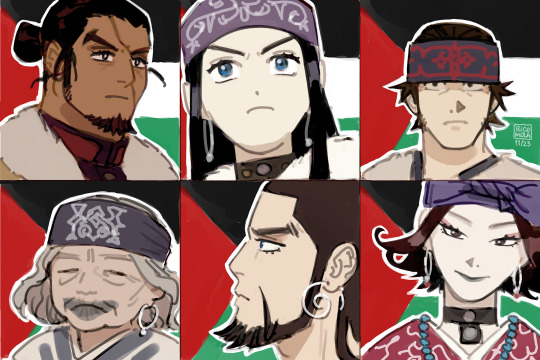
Ok, this was the last thought I needed to draw.
#golden kamuy#my art#ainu#free palestine#indigenous people#ipopte#asirpa#kirawus#huci#kiroranke#inkarmat
256 notes
·
View notes
Text
The Ainu have not intentionally forgotten their culture and their language. It is the modern Japanese state that, from the Meiji era on, usurped our land, destroyed our culture, and deprived us of our language under the euphemism of assimilation. In the space of a mere 100 years, they nearly decimated the Ainu culture and language that had taken tens of thousands of years to come into being on this earth. ~Kayano Shigeru (1926-2006) Our Land Was a Forest: An Ainu Memoir
#all weebs should be legally required to read about japanese imperialism both inside and outside the country that is now labeled as “japan”#but especially this one#anyway#ainu#kayano shigeru#book recommendation
318 notes
·
View notes
Text
Ainu, Indigenous people of Japan
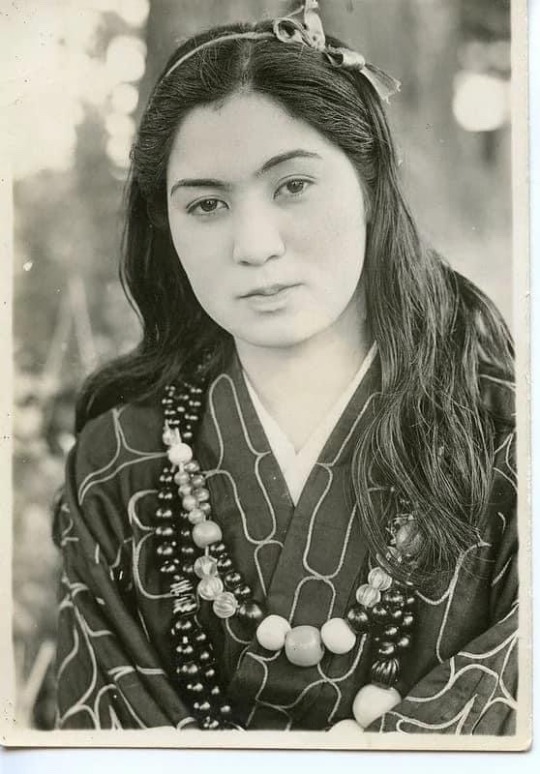

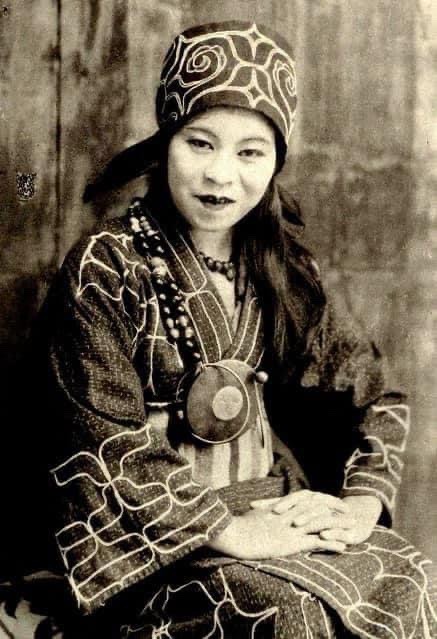
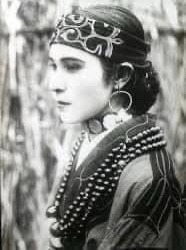
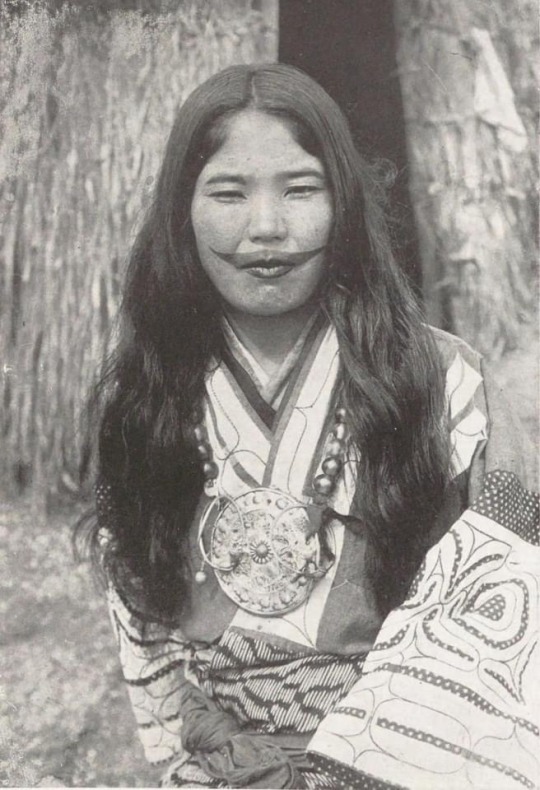
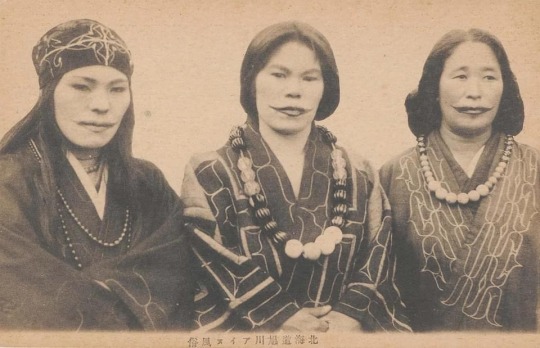
The Ainu are an ethnic group of related indigenous peoples native to northern Japan, including Hokkaido and Northeast Honshu, as well as the land surrounding the Sea of Okhotsk, such as Sakhalin, the Kuril Islands, the Kamchatka Peninsula, and the Khabarovsk Krai; they have occupied these areas known to them as "Ainu Mosir" (Ainu: アイヌモシㇼ, lit. 'the land of the Ainu'), since before the arrival of the modern Japanese and Russians. These regions are often referred to as Ezo (蝦夷) in historical Japanese texts. X
98 notes
·
View notes
Text
every time i see someone say that we should erase all other languages and make english the 'universal language' I'm reminded how ignorant and culturally insensitive some people are. to not be aware of the historical and cultural significance of a language in most cultures is bizarre. in erasing a language you would thus be erasing years of important history of a culture. i hope these people educate themselves before speaking on something they know nothing about simply because it would 'make their lives easier'. not to mention its so tone-deaf to the people who are fighting for language revitalization due to the historical language suppression of their ancestors.
#language#rant#linguistics#culture#history#langblr#native american languages#gaelic#ainu#language revitalization#endangered languages#indigenous#indigenous languages
851 notes
·
View notes
Text
I was lucky enough to visit Hokkaido for a few days, so of course I had to go look at some Golden Kamuy related places!

1. Hokkaido Kaitaku village is a big outdoor museum that archives old historical buildings, many of which appear in GK. So many, in fact, that the museum handed me a map where they list the buildings that appear in the manga and it was most of them.

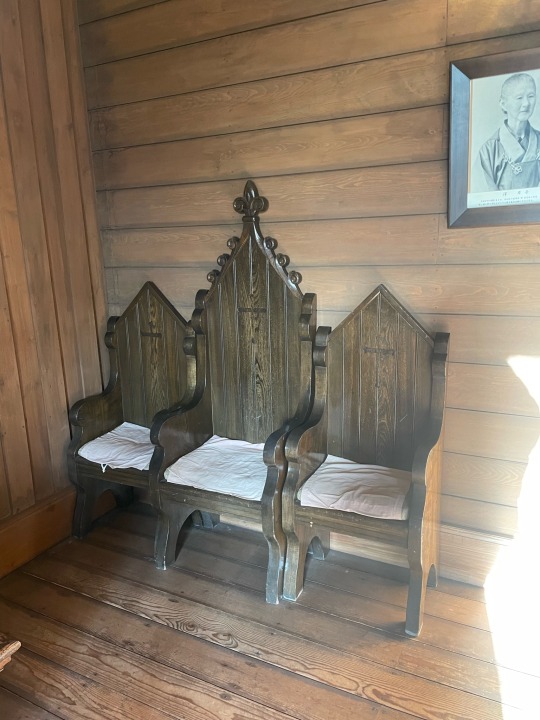
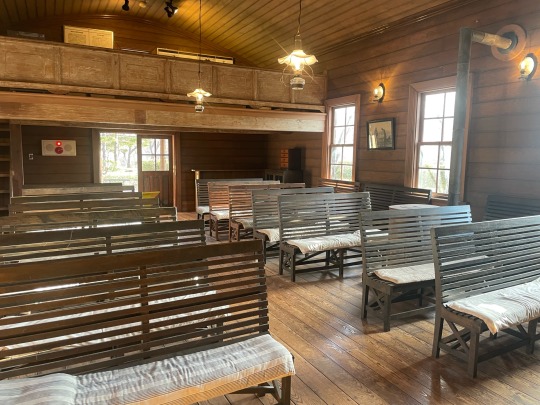
The church in which Tsurumi confronts Asirpa
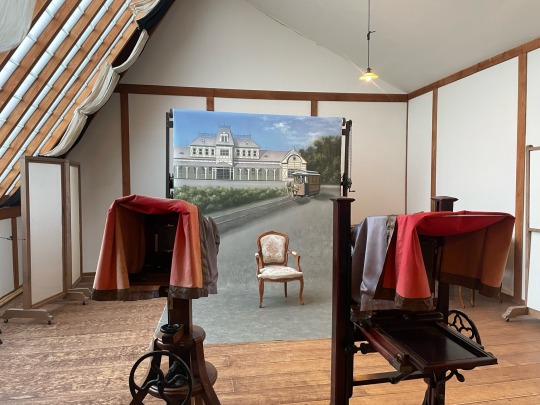

The photography studio

Herring fishermen's communal lodge


The infamous otter hotpot location👀
I even saw two cosplayers dressed up as Inkarmat and Suenaga doing a photoshoot together in an old clinic!
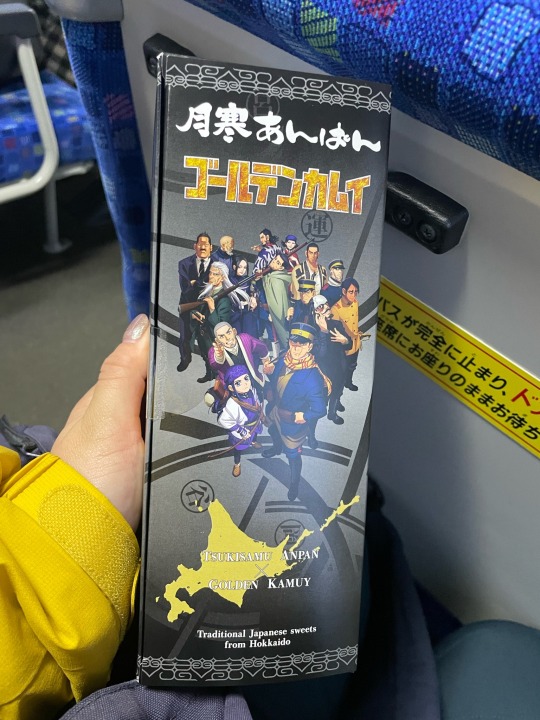

I couldn't not buy a box of GK Tsukisappu Anpan too.
2. The old Sapporo Beer factory
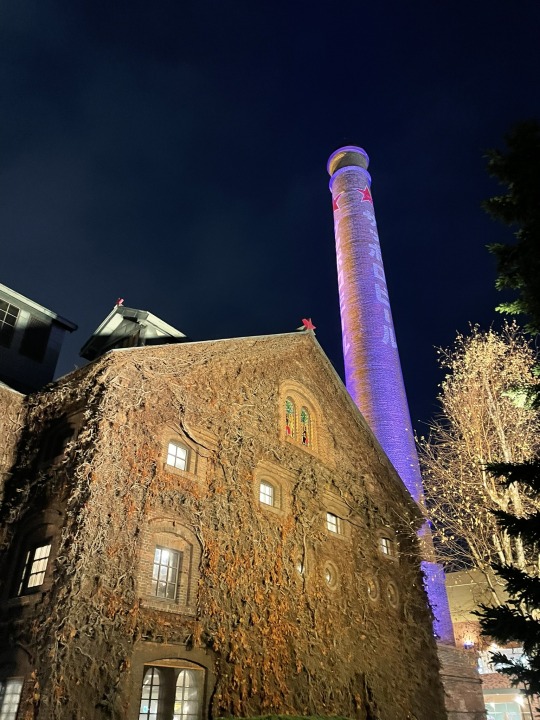
A lot went down here...
3. I went to an Ainu cuisine restaurant. I had a bear meat hotpot, deer meat skewers, tonoto (Ainu wine made from millet), ento herb tea, among other things. They were all amazing.




They had copies of GK volumes as well. I miss you Kiroranke.
4. I soaked up in an onsen at Noboribetsu.

The beautiful sulfuric Hell Valley at Noboribetsu.
Here I went to the Noboribetsu Bear Park and saw many Ezo Higuma bears. The males are so big, and while they are cute they would be utterly terrifying to encounter in the wild.

The park also had exhibits showing Ainu living spaces, tools, clothing, and explanations about the Iomante bear ritual which were really interesting.



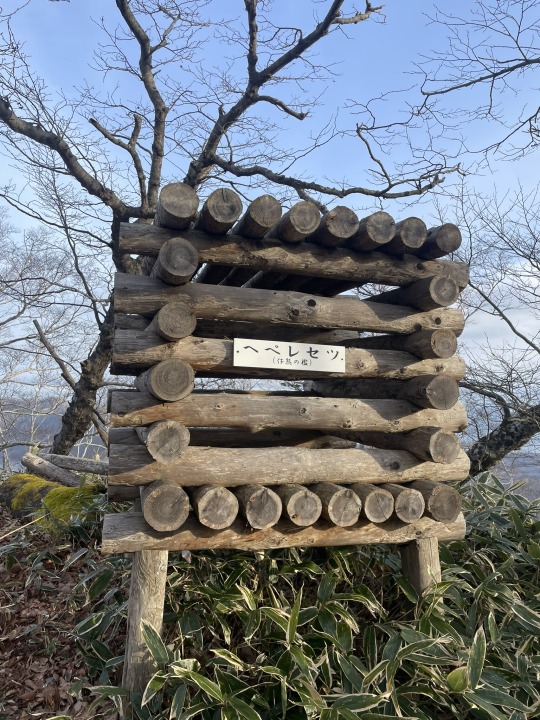
This was my first time in Hokkaido and it was an amazing experience. I only had a few days so I only saw Sapporo, Otaru, and Noboribetsu. I really wanted to see Abashiri prison but Hokkaido is a big island and I wasn't able to this time, but I aspire to go one day!
82 notes
·
View notes
Photo
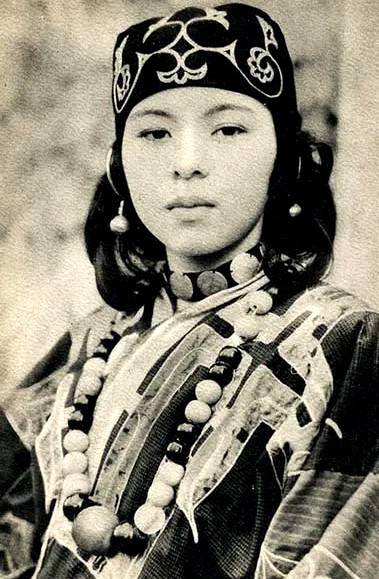
[Photo above: an Ainu woman in 1920s]
Legends and myths about trees
Forest spirits and natives (4)
Korpokkur (or Korbokkur) – ‘People under the butterbur leaves’
Korpokkur are the tribes of dwarfs in folklore of the Ainu people of the northern Japanese islands, meaning 'people under the butterbur leaves'.
The Ainu believe that the korpokkur were the people who lived in the Ainu's land before the Ainu themselves lived there. They were short of stature, agile, and skilled at fishing. They lived in pits with roofs made from butterbur leaves.
Long ago, the korpokkur were on good terms with the Ainu, and would send them deer, fish, and other game and exchange goods with them. The little people hated to be seen, however, so they would stealthily make their deliveries under the cover of night.
One day, a young Ainu man decided he wanted to see a korpokkur for himself, so he waited in ambush by the window where their gifts were usually left. When a korpokkur came to place something there, the young man grabbed it by the hand and dragged it inside. It turned out to be a beautiful korpokkur woman with a tattoo on the back of her hand (the tattooing of Ainu women is said to be based on this). She was so enraged at the young man's rudeness that her people have not been seen since. Their pits, pottery, and stone implements, the Ainu believe, still remain scattered about the landscape.
[History of Ainu]
The Ainu are an indigenous people from Sakhalin in the north to the Kuril Islands and Kamchatka Peninsula in the north-east and around the northern Japanese archipelago, especially in Hokkaido. The Ainu have long had an economic zone around the Sea of Okhotsk region.
They worshipped bears and wolves, as well as gods embodied in the elements of nature, such as water, fire and wind.
Ainu is the Ainu language for 'human' and is believed to have originally meant 'human' as a concept as opposed to 'kamui' (a designation referring to nature based on the spirit that everything in nature has a heart).
The Ainu people were conquered and their land confiscated by neighbouring Japan and Russia between the 15th and 18th centuries. Later, in the 19th century, forced them to convert, apply their customs and belong. During the Soviet era, hundreds of Ainu were executed or forcibly relocated. Today, the population and the Ainu language are in decline and there are revival efforts for their traditional culture.
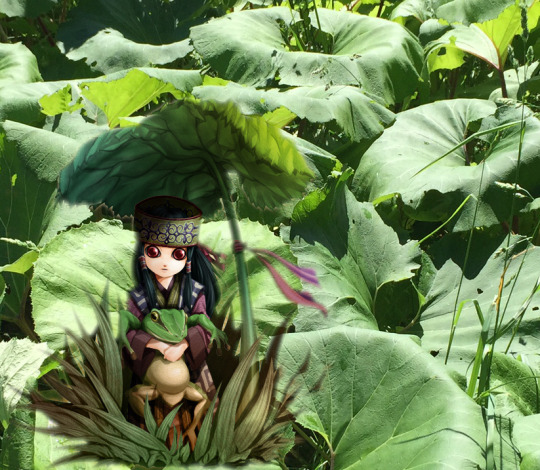
木にまつわる伝説・神話
森の精霊たちと原住民 (4)
コロポックル (又はコロボックル) 〜「蕗の葉の下の人々」
コロボックルは、アイヌ語で「蕗の葉の下の人」という意味を持つ、アイヌに伝わる小人族のこと。
アイヌがこの土地に住み始める前から、この土地にはコロボックルという種族が住んでいた。彼らは背丈が低く、動きがすばやく、漁に巧みであった。又屋根をフキの葉で葺いた竪穴にすんでいた。
昔、コロボックルはアイヌと仲が良く、鹿や魚などの獲物を送ってもらったり、品物を交換したりしていた。しかし、小人たちは人目につくのを嫌い、夜陰に紛れてこっそりと配達していた。
ある日、アイヌの青年がコロボックルを一目見たいと思い、いつも贈り物を差し入れる窓際で待ち伏せしていた。そのコロボックルがそこに何かを置こうとすると、青年はそれを手で掴んで屋内に引きずり込んだ。すると、それは美しい女性のなりをしておりその手の甲には刺青があったという (なおアイヌの婦人のする刺青はこれにならったものであるといわれている)。コロボックルは青年の無礼に激怒し、一族を挙げて北の海の彼方へと去ってしまった。以降、アイヌの人々はコロボックルの姿を見ることはなくなったという。現在でも土地のあちこちに残る竪穴や地面を掘ると出てくる石器や土器は、彼らがかつてこの土地にいた名残である。
[アイヌの歴史]
アイヌ民族は、北は樺太から北東の千島列島・カムチャツカ(勘察加)半島、日本列島北部周辺、とりわけ北海道の先住民族である。アイヌ民族は永くオホーツク海地域一帯に経済圏を有していた。彼らは、熊やオオカミ、さらに水、火、風といった自然の要素に具現化された神を崇拝していた。
アイヌとはアイヌ語で「人間」を意味する言葉で、もともとは「カムイ」(自然界の全てのものに心があるという精神に基づいて自然を指す呼称) に対する概念としての「人間」という意味であったとされている。
アイヌ民族は、15世紀から18世紀にかけて、近隣国の日本とロシアに征服され、土地を没収された。その後、19世紀には改宗、慣習の適用、帰属を余儀なくされた。ソ連時代には数百人のアイヌが処刑されたり、強制移住させられた。現在、人口やアイヌ語は減少しつつあり、伝統文化の復興に向けた取り組みが行われている。
#trees#tree legend#tree myth#forest spirit#nature worship#ainu#drawf#koropokkur#hokkaido#sea of okhotsk#kamchatka peninsula#folklore#legend#mythology#nature#art
286 notes
·
View notes
Text

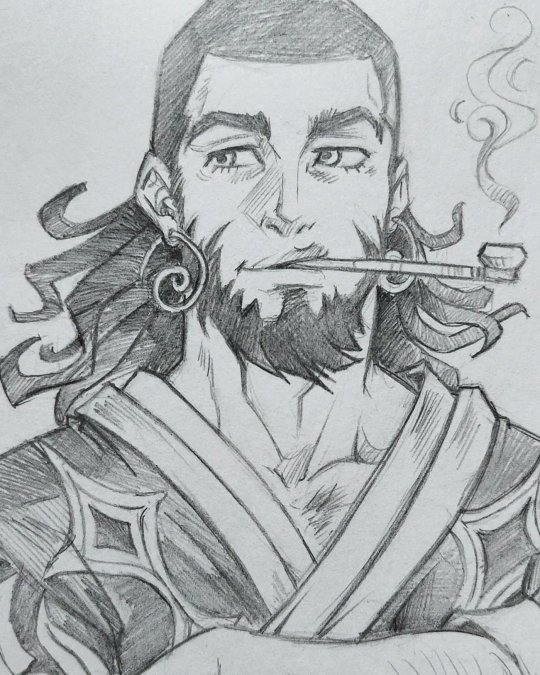

~Kiroranke~
I think this is the first fanart I've made of Golden Kamuy and I think it's wrong because I love this series and I adore its characters.
I want to do Sugimoto, Ogata, Vasily...o_o 🔥🔥🔥🔥 So much work!
#kiroranke#kiroranke fanart#kiroranke golden kamuy#golden kamuy#golden kamuy fanart#pencil#pencil art#draw#drawings#doodle#sketch#traditional art#my art#my stuff#illustration#ainu
416 notes
·
View notes
Text
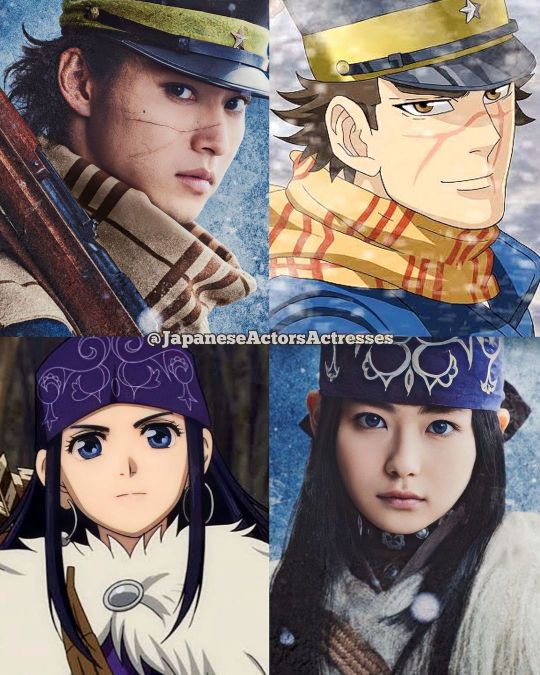
Kento Yamazaki and Anna Yamada in live action movie, Golden Kamuy (2024) by Japanese Actors Actresses
Looks like it's going to be as epic as the live action Rurouni Kenshin.
youtube
In the early twentieth century, a Russo-Japanese War veteran Saichi Sugimoto (Kento Yamazaki) scratches out a meager existence during the postwar gold rush in the wilderness of Hokkaido. When he stumbles across a map to a fortune in hidden Ainu gold, he sets off on a treacherous quest to find it.
But Sugimoto is not the only one interested, and others who knows about the gold will kill to get it! Faced with the harsh conditions of the northern wilderness, ruthless criminals and rogue Imperial Japanese soldiers, Sugimoto will need all his skills and luck—and the help of an Ainu girl named Asirpa (Anna Yamada)—to survive.
Plot Sypnosis by Anime News Network
#golden kamuy#kento yamazaki#yamazaki kento#anna yamada#yamada anna#japanese movie#j movie#jmovie#ainu#imperial japan#russo japanese war#2024 movie#Youtube
81 notes
·
View notes
Text
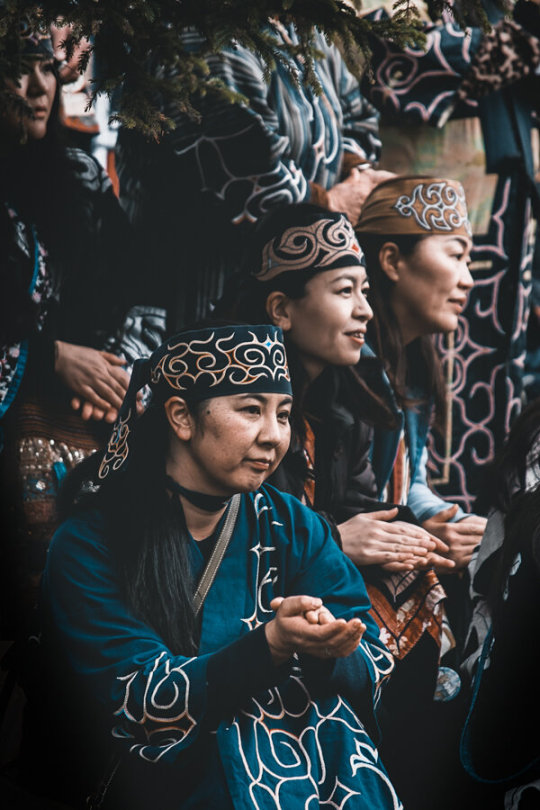
Ainu women, Japan, by Adam Isfendiyar
603 notes
·
View notes
Video
youtube
youtube
[Being Japanese], documentary in 2 parts by Greg Lam from Life where I am from, tackling the subject of identity in Japanese so called “homogeneous” society (spoiler: it’s not as homogeneous as far right would like to believe). In Greg’s own words:
What makes a Japanese person Japanese? Is it the blood that runs through their veins? A parent they were born to? The country they grew up in? Is it how they look? How they act? How they speak? Their citizenship? A documentary exploring what it means to be Japanese.
Greg, father of 2 hâfu kids himself, went around interviewing several people about what they think about their identities and relation with Japan. Profils includes Ainu, “Okinawan”/Ryukyuan, but also Korean-descendants, nikkei/Japanese descendants, hâfu/biracial Japanese or kikokushijo/returnees. Second part of the documentary also covers refugees and naturalised/dual citizens (including a disabled person).
I can’t recommend you enough to watch this documentary! Be aware that some parts are difficult as they cover traumatic events/issues (racism, assault, etc) encountered by the interviewees. However, Greg Lam never falls prone to tearjerking, and many passages are amazingly covered!
#japan#video#documentary#Greg Lam#Life where I am from#identity#Japanese society#hafu#biracial#ainu#okinawa#ryuukyuu#Korean#Zainichi-Korean#nikkei#Japanese descendant#kikokushijo#refugee#dual citizen#naturalised citizen#disabled#cw: racism#cw:assault
415 notes
·
View notes
Text


Dagger, Ainu people, Japan, late 19th-early 20th century
from Mandarin Mansion
80 notes
·
View notes
Text

Activist Asirpa to project my emotions again.
#asirpa#golden kamuy#free palestine#ainu#indigenous people#modern au#my art#someone on twitter said she was giving them Huey Freeman vibes#antizionism
174 notes
·
View notes
Link
More than 70 per cent of birds – and a similar proportion of bird species – have disappeared in a region of Japan once occupied by hunter-gatherers and converted into farmland only a century and a half ago.
The Ainu, an Indigenous people in Ishikari, and their ancestors lived off salmon, deer, bear and edible plants for approximately 15,000 years. Agricultural landscaping, including systematic deforestation and wetland drainage, only began in the region after the Japanese government stepped in. Today, the land is a mix of agricultural plots and housing developments, representing a dramatic change in land cover in only 153 years.
[...]
For Laura Kehoe at the University of Oxford, it is “unique” to see “such an interesting case study” dealing with such a rare opportunity for data. “We just don’t see this kind of story happening everywhere else, because so many areas have been converted so long ago,” says Kehoe.
“To me, the study speaks to something that’s already quite clear, to be honest,” she says. “And that’s that industrial agriculture does not benefit the natural world.”
710 notes
·
View notes
Text

Ainu woman. Hokkaido, Japan. About 1900
23 notes
·
View notes